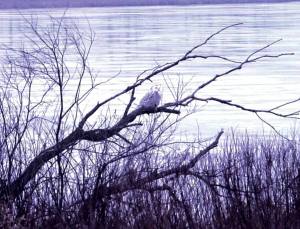Last winter, a great gray owl showed up in Madison, right in the city. A magnificent two foot tall raptor that is usually found in Canada, maybe northern Minnesota in the winter. To see one is a treasured experience for birdwatchers, and of course many people flocked to catch a glimpse of the bird. The owl was cooperative, and more and more people showed up. Digital cameras make it easy to document such rare finds, and of course birders wanted good photos to prove their sightings and to post on social networking sites. Others wanted to photograph the birds so that they could post or sell their copyrighted photos. Sometimes, dozens or even a hundred people would locate and gather near the owl, moving closer and closer to get those prize photos, flushing the bird repeatedly. One wonders how much this bird was stressed by this activity, and how it was able to hunt and otherwise do the things it needed to survive. Such behavior by people has led some birders to purposely not report some rare birds so that they won`t be harassed.
 This year has been another great one to see snowy owls, and Manitowoc County is an excellent place to find them. Up to 14 have been seen in a few hours by birders searching open fields in the western part of the county. Collins Marsh State Wildlife Area has been a good place to find them, and in the area, Charles Sontag and I recorded four during the annual Christmas Bird Count. We noticed one pair near the parking lot along JJ at Collins marsh, viewing them from the parking lot and photographing them from a distance. Mine isn`t an award-winning photo by any means, distant and dark, but it is enough to remember the experience and the day. We didn`t leave the parking lot, and the birds never flushed or even seem to notice us. Just the way we wanted it.
This year has been another great one to see snowy owls, and Manitowoc County is an excellent place to find them. Up to 14 have been seen in a few hours by birders searching open fields in the western part of the county. Collins Marsh State Wildlife Area has been a good place to find them, and in the area, Charles Sontag and I recorded four during the annual Christmas Bird Count. We noticed one pair near the parking lot along JJ at Collins marsh, viewing them from the parking lot and photographing them from a distance. Mine isn`t an award-winning photo by any means, distant and dark, but it is enough to remember the experience and the day. We didn`t leave the parking lot, and the birds never flushed or even seem to notice us. Just the way we wanted it.
Please keep in mind that snowy owls and other winter migrants from the Arctic have already endured a very long migration and need to hunt in peace just to survive. For one reason or another they have traveled farther south than they usually do this year, and that extra travel can be very hard on them. If they are constantly chased, they will use a lot of extra energy upon which they would otherwise depend just to keep warm and hunt. They are wonderful creatures in their own right and not here for our amusement. To harass them might put them in peril.
Serious birders have known that for a long time and organizations like the Wisconsin Society for Ornithology have developed a code of ethics. That code includes as its first point considering the welfare of birds while birdwatching by not flushing or harassing them.
We encourage everyone to appreciate birds and their beauty, and at the same time consider how what we do can impact their lives.
